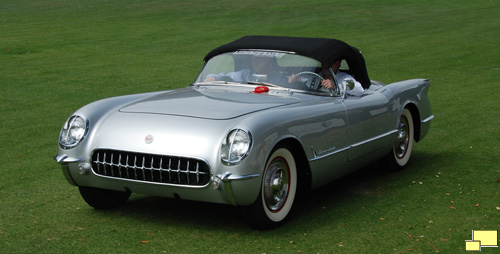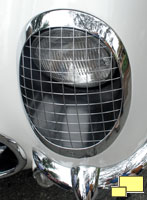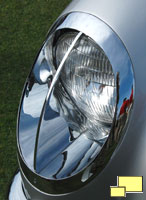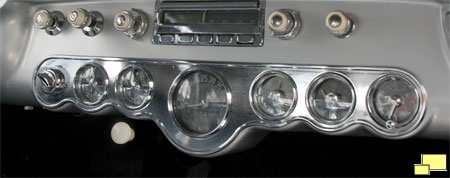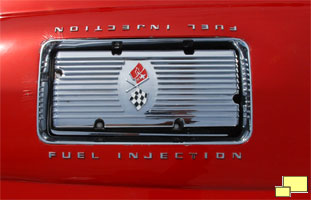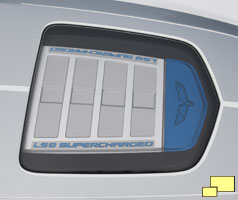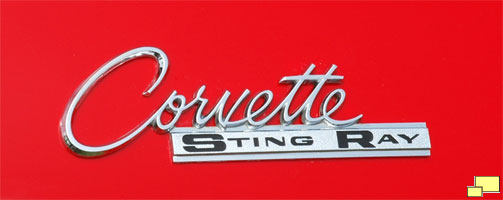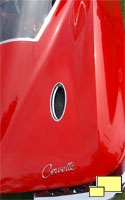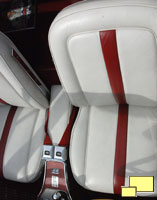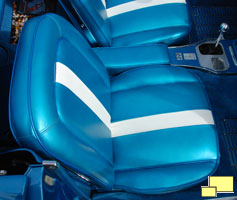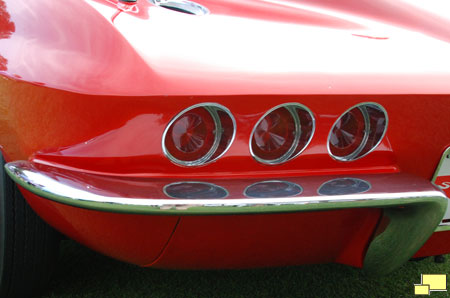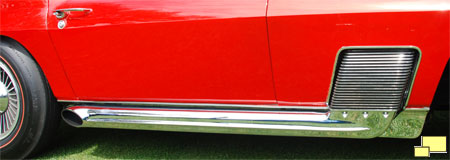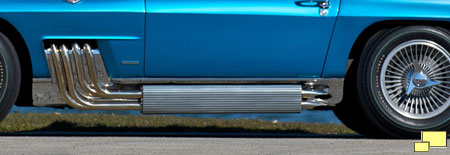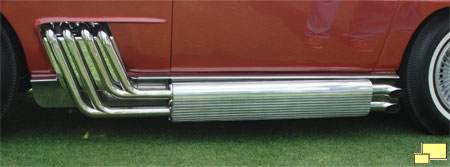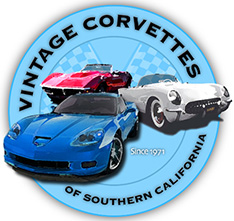
|

|
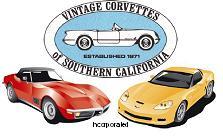
|
Return to Vintage Corvettes Home Page
Return to Vintage Corvettes Features Page
Publisher, The Corvette Story
Corvette C1, C2 Concept Cars
The creative process can be a fascinating and difficult course. Often there are no right or wrong answers and opinions can vary widely.
It can be interesting to look back at how it all involved and see what alternative ideas were considered. This applies to many areas, including music, art and car design.
The 1954 Corvette shown above was a design study project owned by Roger Crispell, a studio Chief at GM styling. It was assigned Shop Order #2536 in April 1955. The gold / silver hue was named Sahara Silver. The car is now part of the Lingenfelter collection.
Left: The headlight cover for the 1953 thru '55 Corvette, a "stoneguard" treatment popular with racers at the time as it protected against rocks thrown up and breaking headlights. Right: The alternative "shark fin" treatment applied to shop order #2536. It's hard to say if it was seriously considered for production. There may have been problems with its real world use; reflections could be an issue; also the myriad of lighting regulations of the day.
Interior updates featured a new instrument bezel. It never appeared on a production Corvette; perhaps it was a cost consideration?
Corvette C2 Ideas
Left: As found on the 1964 World's Fair Styling Corvette, a hood cutout to make the raised fuel injection (affectionately known as the doghouse) visible. While the idea never was implemented in production in 1964, the same concept found it's way to the C6 ZR1 starting in 2009 where the supercharger could be admired by all.
Also on the 1964 Concept car was this thinner "Corvette" script which noticeably is lacking the "Sting Ray" verbiage on the production car (below). Below right: The 1964 World's Fair Styling Corvette featured what looks to be a rear brake cooling duct. It probably was not functional which was common practice at the time.
Some of the concept cars were built for top GM executives; on the left is an interior upgrade in a 1963 convertible built for Bunkie Knudsen, on the right is the interior for styling Chief Harley Earl. Either would've looked good in a dealership showroom.
Going from two to three tail lights in a mid year Corvette was a popular update for the GM stylists of the day.
Corvette C2 Side Exhausts
C2 side exhausts saw a lot of experimentation.
Some might question the "bling" content, but this is often the case with concept cars. Practical and cost considerations prevented them from inclusion on production cars.
This 1964 featured a rather subdued version, at least compared to the others.
1965 side exhaust system (RPO N14) quantity: 759 (3.22%), $134.50. First available in 1964 and designated as a "Off Road Exhaust System", probably due to the fact that they were very loud. The price was reasonable, only $37.70.
Click on any image to view a larger image
